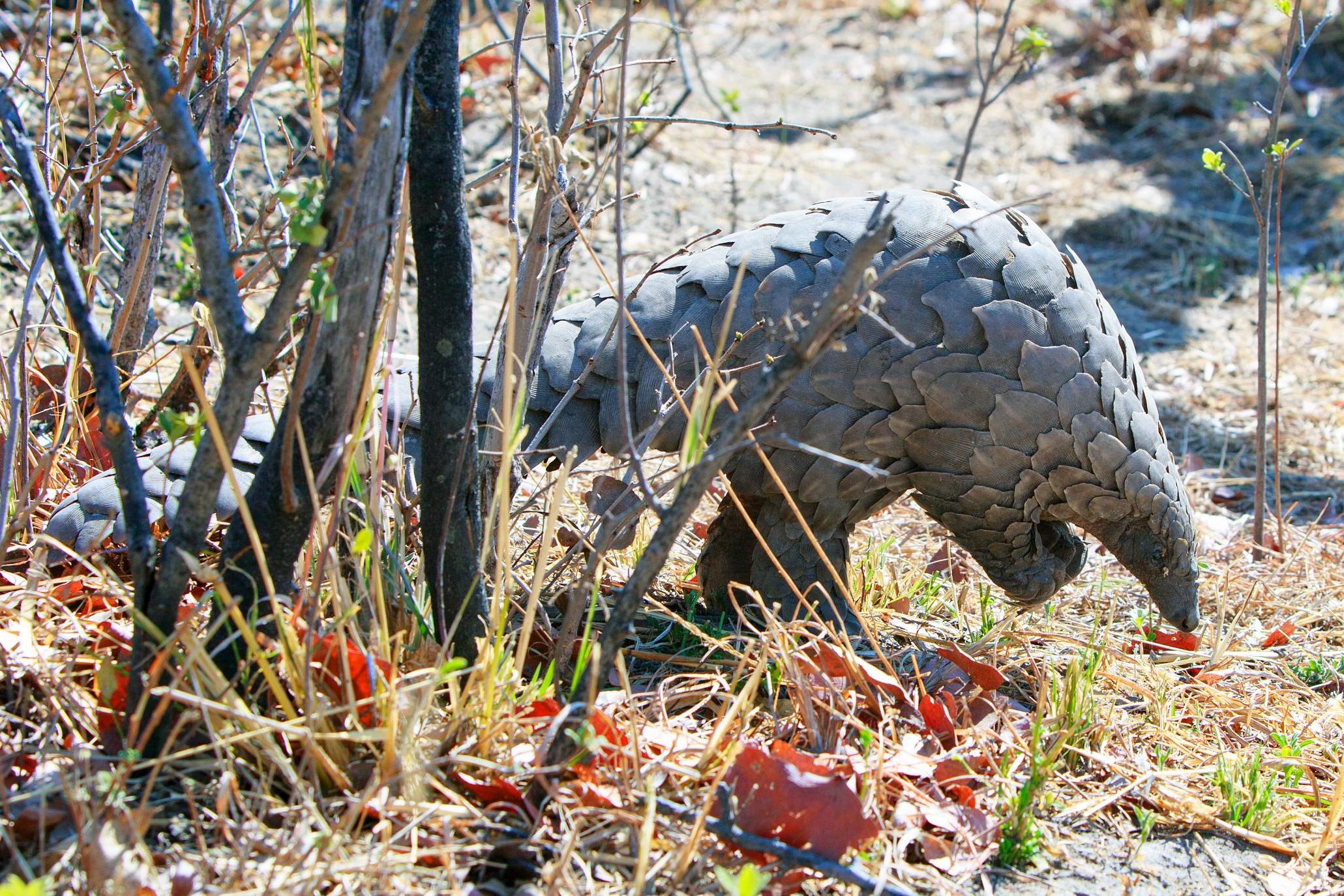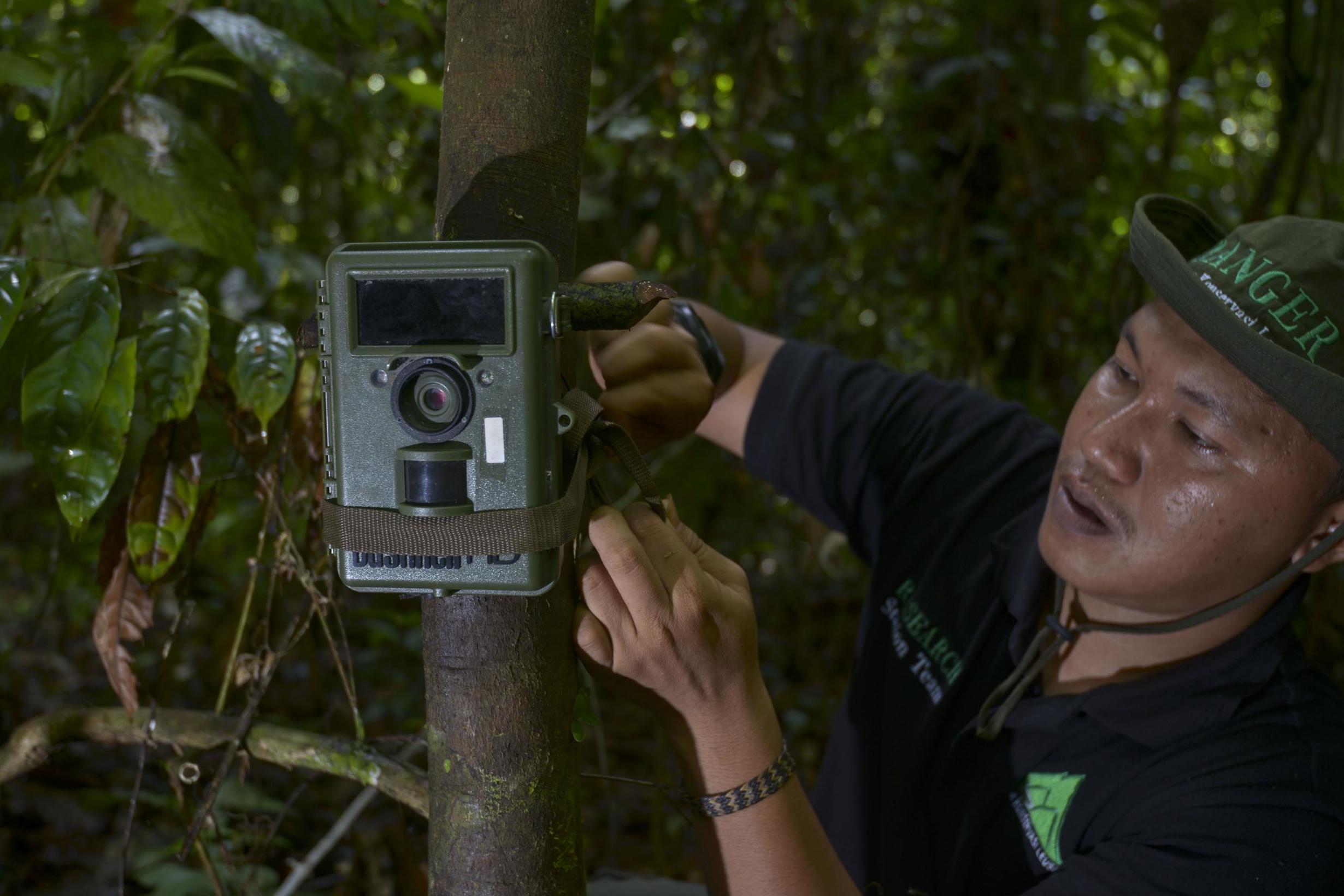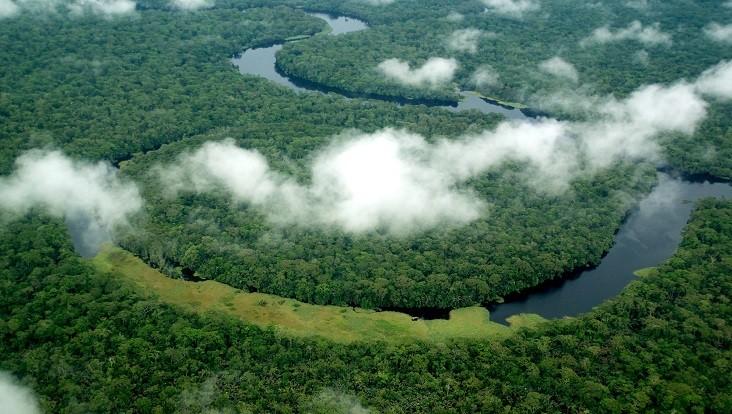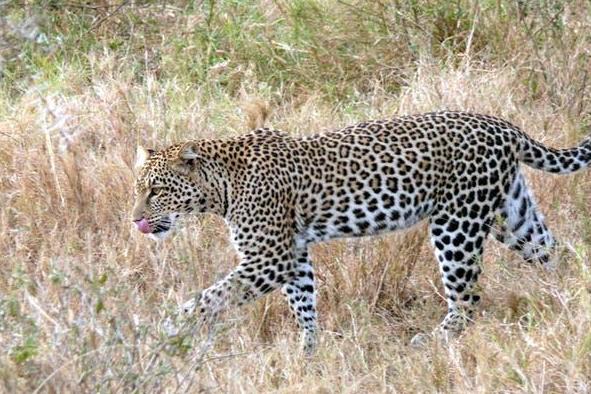Remote cameras are revealing the human impact on rainforest species in Africa
Using new filming techniques, scientists can now study animals in hard-to-reach places, improving conservation in some of the most remote parts of the world, write Mattia Bessone and Barbara Fruth

Your support helps us to tell the story
From reproductive rights to climate change to Big Tech, The Independent is on the ground when the story is developing. Whether it's investigating the financials of Elon Musk's pro-Trump PAC or producing our latest documentary, 'The A Word', which shines a light on the American women fighting for reproductive rights, we know how important it is to parse out the facts from the messaging.
At such a critical moment in US history, we need reporters on the ground. Your donation allows us to keep sending journalists to speak to both sides of the story.
The Independent is trusted by Americans across the entire political spectrum. And unlike many other quality news outlets, we choose not to lock Americans out of our reporting and analysis with paywalls. We believe quality journalism should be available to everyone, paid for by those who can afford it.
Your support makes all the difference.Tropical rainforests are the world’s richest land habitats for biodiversity, harbouring stunning numbers of plant and animal species. The Amazon and the Congo basins, together with Asian rainforests, represent only 6 per cent of earth’s land surface, and yet more than 50 per cent of global biodiversity can be found under their shade.
But observing even the most conspicuous species, such as elephants and apes, is still an extraordinarily difficult task. That’s not even mentioning all the secretive species that are protected by thick vegetation or darkness.
Camera traps have led a technological revolution in wildlife research, making it possible to study species without humans needing to be present. They can be left in the depths of a forest for weeks, taking pictures of anything that moves at any time of day or night.
From their advent three decades ago, camera traps have allowed scientists to discover species such as the grey-faced sengi – a new species of giant elephant shrew living in Tanzania – and the Annamite striped rabbit in Vietnam. They have revealed that lions still wander the Bateke plateau in Gabon, ending speculation that they were locally extinct. They have also photographed the offspring of the elusive Javan rhino, which scientists thought had stopped breeding. With fewer than 100 individuals left, this has given hope that the species could be saved from extinction.
Camera traps are becoming essential for documenting forest species, assessing their distribution and studying their behaviour, as well as counting what’s actually there.

This latter measure, called animal abundance, is perhaps the most important information in wildlife conservation, as it allows researchers to assess the conservation status of a species. But until recently, camera traps could only be used to reliably estimate the abundance of animals with conspicuous markings, such as big cats with spots or stripes peculiar to single individuals.
Counting animals with camera traps remained impossible for the majority of species that lacked these conspicuous features, as the same individual could be counted twice by different cameras at different times. Methods that account for how animals move in and use their habitat were developed to help overcome the problem of detecting the same individual at different locations.
The 17,000km² of intact rainforest contains fewer than 1,000 giant pangolins – an alarming figure given the current illegal trade of pangolin scales
Another method, called camera trap distance sampling, achieves the same result using a different approach. It subdivides the time cameras are active into “snapshots”, taking pictures at, for example, every fifth second in an hour. At a determined moment, an individual can only be spotted at one location, not elsewhere. Double counts are avoided, and researchers can tally the number of animals within the area surveyed at the time of a given snapshot.
We tested this new method in one of the most remote areas of the planet – the southern part of Salonga National Park, a World Heritage Site in the Democratic Republic of the Congo. Here, rangers only had data on the park’s two flagship species – the forest elephant and the bonobo. Near to nothing was known about the other animals that were more difficult to track.

Five field teams walked a forest the size of Wales to deploy 160 camera traps in 743 places. This unprecedented effort produced more than 16,000 video clips, totalling 170 hours of animal footage and revealing 43 different animal species, including bonobos and elephants.
We also captured species rarely detected by human observers, such as the giant ground pangolin, threatened by extinction, the cusimanses, a genus of social mongooses, and the stunning Congo peafowl, a vulnerable species that’s endemic to the country.
Where so far conservation of elusive species such as the African golden cat, the endemic Allen’s swamp monkey and another elephant shrew, the four-toed sengi, had to be based on little to no data, we’re now able to estimate their abundance in the wild.

For some species, the news from our findings were good. Our study revealed that the southern part of Salonga National Park alone harboured as many peafowls as were previously thought to be present in the whole country.
For other species, the results confirmed the need for greater protection. The 17,000km² of intact rainforest contains fewer than 1,000 giant pangolins – an alarming figure given the current illegal trade of pangolin scales.
Mattia Bessone is a PhD researcher in conservation biology at Liverpool John Moores University. Barbara Fruth is an associate professor at Liverpool John Moores University. This article first appeared on The Conversation
Join our commenting forum
Join thought-provoking conversations, follow other Independent readers and see their replies
Comments